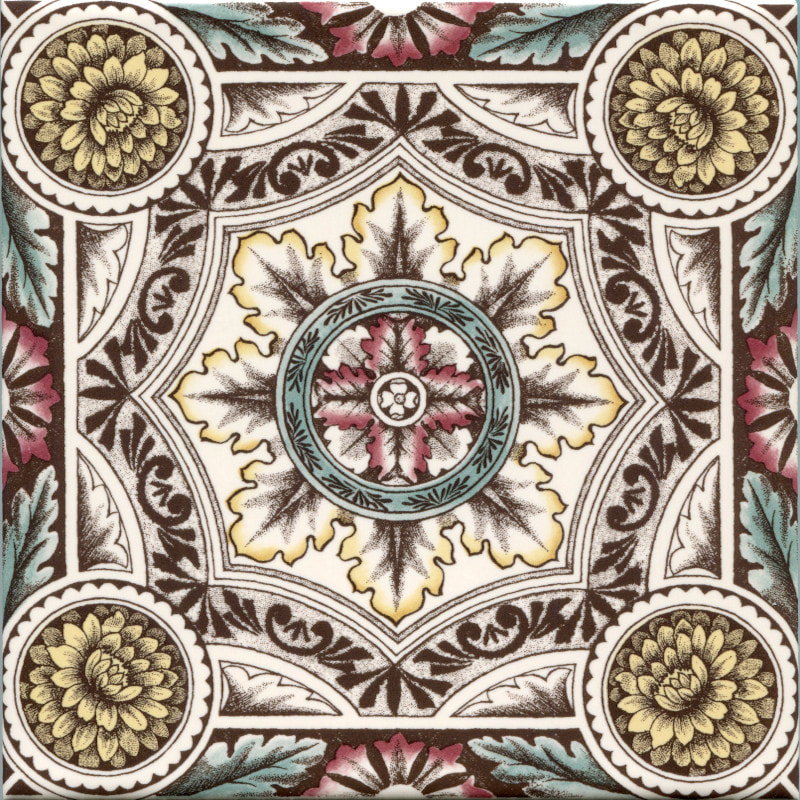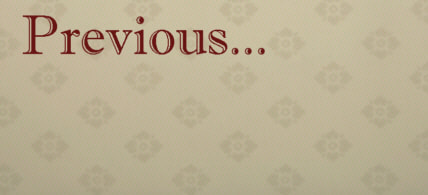|
Prices
152x75x7mm Victorian Green half field $5.00 each + delivery. 152x75x7mm half field all other colours $4.50 each + delivery. 152x152x7mm Victorian Green field $6.50 each + delivery. 152x152x7mm field all other colours $5.50 each + delivery. 152x152x7mm reproduction decorated tiles - Victorian single tiles only: $31.00 each + delivery. For the full range of Victorian single tile designs, please click on the image and follow the links to the 'Artworks' catalogue - Victorian single tiles, Page 35. For prices of all other decorated tiles from the 'Artworks' range, please contact Full Circle for details. |
Notes - a guide for beginners.
1. Dark/light? As well as serving a decorative purpose, Victorian and Edwardian hearths were tiled for purely functional reasons. They were designed as a buffer zone, to catch any embers that might escape the insert, fall onto the floor and cause damage. Darker colours were usually utilised, as those were less likely to show any scorch marks. With the advent of central heating and, as many fireplaces are now largely decorative, customers may wish to install lighter coloured tiles. Customers who do intend to use their old fireplaces for burning are strongly advised to have the chimneys inspected and cleaned.
2. No standing. Hearth tiles were not and are not floor tiles. They are not meant to bear weight. It is also important to protect the edge of hearths from damage. This can be done in a variety of ways. Originally, kerbs and fenders were most commonly employed.
3. New for old? Customers who find they have damaged tiles on their hearth(s), often wish to retain as many of the old tiles as possible. This can be something of a lost cause, depending on how many of the original tiles are damaged, how many can be salvaged when taking them up and, then, finding enough old tiles that actually match, to make the whole exercise worthwhile. It is often far more practical just to replace all the old tiles with new.
1. Dark/light? As well as serving a decorative purpose, Victorian and Edwardian hearths were tiled for purely functional reasons. They were designed as a buffer zone, to catch any embers that might escape the insert, fall onto the floor and cause damage. Darker colours were usually utilised, as those were less likely to show any scorch marks. With the advent of central heating and, as many fireplaces are now largely decorative, customers may wish to install lighter coloured tiles. Customers who do intend to use their old fireplaces for burning are strongly advised to have the chimneys inspected and cleaned.
2. No standing. Hearth tiles were not and are not floor tiles. They are not meant to bear weight. It is also important to protect the edge of hearths from damage. This can be done in a variety of ways. Originally, kerbs and fenders were most commonly employed.
3. New for old? Customers who find they have damaged tiles on their hearth(s), often wish to retain as many of the old tiles as possible. This can be something of a lost cause, depending on how many of the original tiles are damaged, how many can be salvaged when taking them up and, then, finding enough old tiles that actually match, to make the whole exercise worthwhile. It is often far more practical just to replace all the old tiles with new.




